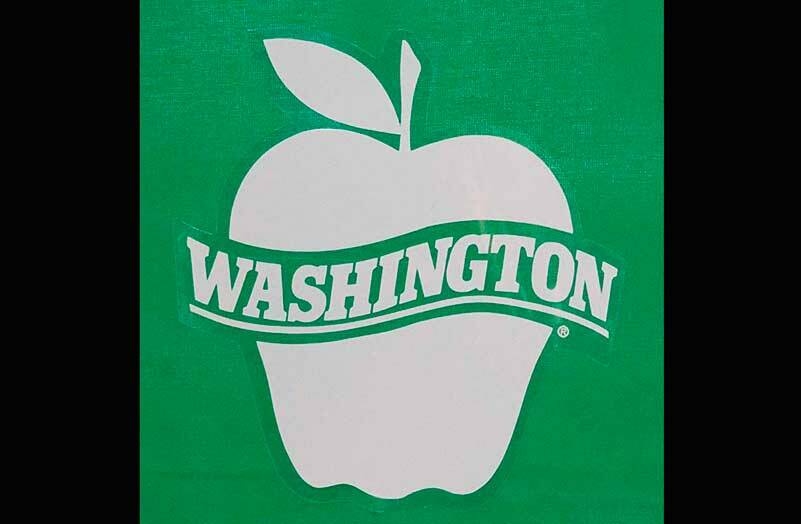By Morf Morford
Tacoma Daily Index
Here in Western Washington, besides the price at our local grocery store, most of us don’t think about apples very much
But we should.
Apples are our state’s most valuable agricultural product – at about $2 billion each year.
Besides filling our fruit baskets and produce bins, Washington state apples make their way around the world.
There are over 7,000 varieties of apples grown worldwide. But only a few are suitable to be grown and marketed in Washington and the larger Pacific Northwest.
The most common varieties are Red Delicious (34%), Gala (19%), Fuji (13%), Granny Smith (12%), Golden Delicious (10%), Cripps Pink (3%), Honeycrisp (3%), and Braeburn (3%).
When it comes to acreage dedicated to apples, across the United States a total of 293,700 acres is dedicated to apples with 177,000 acres here in the Pacific Northwest.
The Northwest region produces about 69% of the U.S. apple crop.
And though the figure changes a bit year to year, we export about 30% of any given year’s harvest.
Our biggest trade partner when it comes to apples is (by far) Mexico, the next largest is Canada.
You can see the fine print on the power and impact of Washington state’s apple industry here – https://nwhort.org/industry-facts/apple-fact-sheet/.
We, in the greater Puget Sound area rarely consider how apples – or, if we are honest, virtually any produce, makes its way to our tables and dinner plates, but, besides being a staple of our diet, agriculture is a mainstay of our economy.
And like others aspects of our economy, agriculture is in trouble.
Those of us who do not work in agriculture may complain about, or even enjoy the weather, but either way, our livelihood – even sheer economic survival – does not depend on the weather.
But for the vast majority of individuals, families and small businesses (not to mention local governments) on the eastern side of the Cascades, the reliance on the whims of weather and water availability can be all consuming.
If there is one element most of us, especially in Western Washington thought we could always take for granted, it was water.
Water, for most of us, for most of our lives, has been everywhere; in rivers and lakes, in the distance gleaming white on the sides of mountain ranges to the west and east, and of course, literally falling from the skies.
Water is, of course, NOT everywhere.
In fact in 2020 and 2021, and presumably in years to come, water has become the precious, irreplaceable resource many of us knew it always was.
Climate change, once the joke aimed at armchair academics or imagined as a hoax by our Asian trading partners is hitting our agricultural producers – and those who depend on them – in the bottom line.
And it turns out that we all depend on them.
Washington grown wheat, for example, travels across the country, even around the world.
As fast growing crops, spring and winter wheats are mainly used for pastas, but also for Nabisco snacks like Oreos, Ritz crackers, and Chips Ahoy.
At least under normal conditions they do. In the 2020s, if a harvest surpasses, or even approaches, half the usual amount, it is cause for something like celebration – or at least a sigh of relief.
Like every other area of life, or maybe even more than most other areas of life, one impact of climate change, from drought to heat waves can cause ever increasing – and more widespread impacts that reverberate across every action and location from grocery store to dinner table.
The irony of course, is that, of any livelihood, agriculture should have stood at attention when the first glimmering of an ever more hostile and constricting set of climactic shifts became less and less deniable and more and more obvious literally decades ago.
Agriculture is far more than business – it’s food, culture, relationships and historically rooted in communities like no other industry.
The rain that so many of us mocked, even cursed, is the one thing that makes everything else possible – from forests to fishing to tap water and, yes, apples and Oreos.
It turns out that rain, that pesky drip from the sky, keeps us alive in more ways than we could ever recognize.
And of, course, it’s not just us.
Every living thing from shellfish to fir tree is impacted by the drought and heat.
Multi-millions of shellfish and other aquatic life were literally cooked alive by the once-considered-impossible convergence of record heat and record low tides (https://www.seattletimes.com/seattle-news/environment/crushing-heat-wave-in-pacific-northwest-and-canada-cooked-shellfish-alive-by-the-millions/?).
Most trees conserve moisture by increasing their level of internal pitch/resin.
This does allow them to survive times of drought.
Unless, of course, fire comes along.
And then the trees become not only more flammable, but borderline explosive.
From berries, to apples to Ritz crackers, crumbling roads and fire hazards, a shifting climate is impacting us all.
And a scene, like many others, much like a plot-line from a Hollywood movie, emerges – fights, literal and legal over water are beginning to take over our local news headlines.
Water, the one resource we imagined to be endless, is in fact finite, and essential, and the most important of all.
Fun fact:
Only one apple species is native to our area – Pacific Crabapple is the only native apple in our region. It can be found from southern Alaska to northern California, along the coast on the west side of the Cascade Mountains.
You can see more on the history of Washington state apples here – waapple.org/history/.





